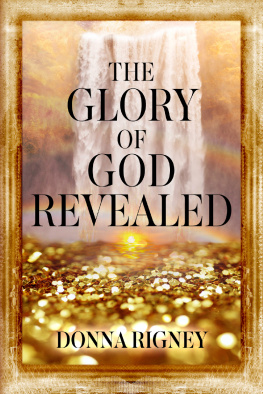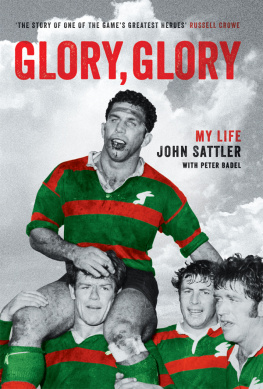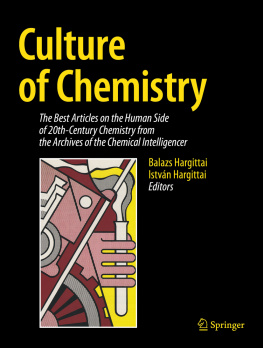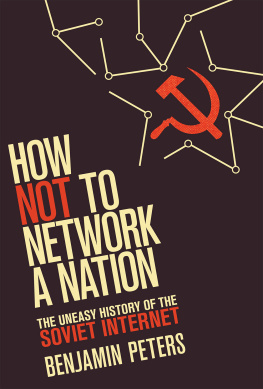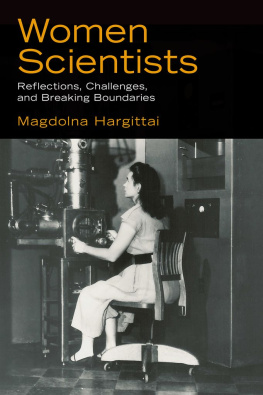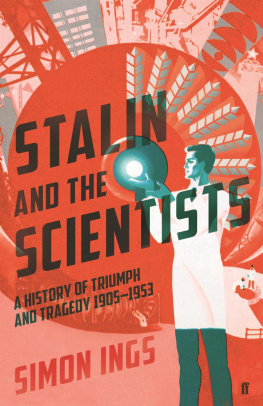Hargittai - Buried glory: portraits of Soviet scientists
Here you can read online Hargittai - Buried glory: portraits of Soviet scientists full text of the book (entire story) in english for free. Download pdf and epub, get meaning, cover and reviews about this ebook. City: Soviet Union, year: 2014;2013, publisher: Oxford University Press, Incorporated, genre: Politics. Description of the work, (preface) as well as reviews are available. Best literature library LitArk.com created for fans of good reading and offers a wide selection of genres:
Romance novel
Science fiction
Adventure
Detective
Science
History
Home and family
Prose
Art
Politics
Computer
Non-fiction
Religion
Business
Children
Humor
Choose a favorite category and find really read worthwhile books. Enjoy immersion in the world of imagination, feel the emotions of the characters or learn something new for yourself, make an fascinating discovery.

Buried glory: portraits of Soviet scientists: summary, description and annotation
We offer to read an annotation, description, summary or preface (depends on what the author of the book "Buried glory: portraits of Soviet scientists" wrote himself). If you haven't found the necessary information about the book — write in the comments, we will try to find it.
Hargittai: author's other books
Who wrote Buried glory: portraits of Soviet scientists? Find out the surname, the name of the author of the book and a list of all author's works by series.
Buried glory: portraits of Soviet scientists — read online for free the complete book (whole text) full work
Below is the text of the book, divided by pages. System saving the place of the last page read, allows you to conveniently read the book "Buried glory: portraits of Soviet scientists" online for free, without having to search again every time where you left off. Put a bookmark, and you can go to the page where you finished reading at any time.
Font size:
Interval:
Bookmark:
Buried Glory
PORTRAITS OF SOVIET SCIENTISTS
Istvan Hargittai


Oxford University Press is a department of the University of Oxford. It furthers the Universitys objective of excellence in research, scholarship, and education by publishing worldwide.
Oxford New York
Auckland Cape Town Dar es Salaam Hong Kong Karachi
Kuala Lumpur Madrid Melbourne Mexico City Nairobi
New Delhi Shanghai Taipei Toronto
With offices in
Argentina Austria Brazil Chile Czech Republic France Greece
Guatemala Hungary Italy Japan Poland Portugal Singapore
South Korea Switzerland Thailand Turkey Ukraine Vietnam
Oxford is a registered trademark of Oxford University Press in the UK and certain other countries.
Published in the United States of America by
Oxford University Press
198 Madison Avenue, New York, NY 10016
Oxford University Press 2013
All rights reserved. No part of this publication may be reproduced, stored in a retrieval system, or transmitted, in any form or by any means, without the prior permission in writing of Oxford University Press, or as expressly permitted by law, by license, or under terms agreed with the appropriate reproduction rights organization. Inquiries concerning reproduction outside the scope of the above should be sent to the Rights Department, Oxford University Press, at the address above.
You must not circulate this work in any other form and you must impose this same condition on any acquirer.
Library of Congress Cataloging-in-Publication Data
Hargittai, Istvan, author.
Buried glory : portraits of Soviet scientists / Istvan Hargittai.
pages; cm
Includes bibliographical references and index.
ISBN 9780199985593 (alkaline paper) 1. ScientistsSoviet UnionBiography. 2. ScienceSoviet Union. I. Title.
Q141.H263 2013
509.2247dc23
2013005419
9780199985593
987654321
Printed in the United States of America on acid-free paper
I dedicate this book to the memory of my father,
Jen Wilhelm (19011942). He was a Budapest lawyer, the first member of his family who acquired higher education. He coauthored a book about unfair competition. In 1942, anti-Jewish legislation in Hungary sent himunder most humiliating conditions in a so-called labor-service unitto the Eastern Front. He was ordered to sweep mine fields with his bare hands, and was blown apart. His remains rest in a mass grave in Western Russia.
Drive and Curiosity: What Fuels the Passion for Science (Prometheus, 2011)
Judging Edward Teller: A Closer Look at One of the Most Influential Scientists of the Twentieth Century (Prometheus, 2010)
With Magdolna Hargittai, Symmetry through the Eyes of a Chemist, Third Edition (Springer, 2009; 2010)
With Magdolna Hargittai, Visual Symmetry (World Scientific, 2009)
The DNA Doctor: Candid Conversations with James D. Watson (World Scientific, 2007)
The Martians of Science: Five Physicists Who Changed the Twentieth Century (Oxford University Press, 2006; 2008)
Our Lives: Encounters of a Scientist (Akadmiai Kiad, 2004)
The Road to Stockholm: Nobel Prizes, Science, and Scientists (Oxford University Press, 2002; 2003)
With Magdolna Hargittai and Balazs Hargittai, Candid Science IVI: Conversations with Famous Scientists (Imperial College Press, 20002006)
With Magdolna Hargittai, In Our Own Image: Personal Symmetry in Discovery (Plenum/Kluwer, 2000; Springer, 2012)
With Magdolna Hargittai, Symmetry: A Unifying Concept (Shelter Publications, 1994)
With R. J. Gillespie, The VSEPR Model of Molecular Geometry (Allyn & Bacon, 1991; Dover Publications, 2012)
During the Cold War in the period 19451991, the balance of power between the two superpowersthe United States and the Soviet Union, including their alliesmaintained a tenuous peace. Each of the two superpowers possessed enough destructive weaponry to annihilate the other many times over. In many other aspects the two superpowers were vastly different. The United States was more technologically advanced, whereas the Soviet Union had a troubled economy and a backward infrastructure. The sophisticated weaponry of the Soviet Union was to a large extent due to the outstanding achievements of its scientists and the communist regimes ability to concentrate its limited resources on selected tasks. The Soviet Union could not have become a superpower without a strong scientific background that relied on some traditions in science dating back to czarist Russia, but whose foundations were created from the beginning of Soviet power and developed in the 1920s and 1930s.
To be a scientist was one of the most privileged professions in the Soviet Union. It was a magnet for talent in view of the very restricted possibilities where gifted young people could aspire for a career. In contrast, the current Russia pays diminishing attention to science. One of the vice presidents of the Russian Academy of Sciences recently noted, The demise of the Soviet Union hurt Russian science very much.
Although communist ideology advocated a classless society, there was strong stratification in Soviet society. This is conspicuously demonstrated by the differentiation of its burial places. They had a hierarchy, with the Lenin Mausoleum on the Red Square in Moscow at its topbetween 1953 and 1961 it was Lenins and Stalins mausoleum. Behind the mausoleum are buried the next echelon of Soviet leaders, each represented by a bust. Stalin is one of them; his bust was erected as late as 1970, indicating how hesitant post-Stalin Soviet leaderships were in condemning one of the bloodiest dictators in world history. When I last saw these graves (in June 2011), of the twelve, only Stalins was covered with fresh flowers. Many of the most distinguished Soviet (and some international) politicians, military leaders, and communist revolutionaries are interred in the Kremlin wall, among them Sergei Korolev, the chief Soviet rocket constructor, and Igor Kurchatov, the nuclear czar.
The Novodevichy Cemetery in Moscow is Russias most distinguished cemetery.In addition to political and military leaders, buried here are many of the topmost representatives of Soviet (as well as pre-Soviet and post-Soviet Russian) intelligentsia: writers, artists, scientists. A walk in the cemetery reveals such a plethora of great scientists of the Soviet decades that in itself is a manifestation of the importance that science played in the Soviet regime.
When I was a masters degree student in Moscow in the first half of the 1960s, I heard a lot about the Novodevichy Cemetery, but could not visit it. For years, it was closed temporarily for reconstruction. When I visited Moscow in the early 1980s, it was possible to visit the Novodevichy, but at the entrance the police took away all cameras, which they returned when the visitor left the cemetery. I was very much taken by the modern tombstone recently erected over the former Soviet leader Nikita Khrushchevs gravethe work of sculptor Ernst Neizvestny.
Nowadays, it is possible to visit Novodevichy freely, and on the occasion of my rare visits to Moscow, I never miss the opportunity to return there. Quite a few scientists whom I knew personally are buried there, some in their own right, others because they inherited the right from their families. Walking along the alleys of this beautiful memorial place, the thought is always with me that during the Soviet era there was an extraordinary accumulation of talent in science. They were the very men (there were hardly any women among them) who made it possible for the Soviet Union to become a superpower.
Next pageFont size:
Interval:
Bookmark:
Similar books «Buried glory: portraits of Soviet scientists»
Look at similar books to Buried glory: portraits of Soviet scientists. We have selected literature similar in name and meaning in the hope of providing readers with more options to find new, interesting, not yet read works.
Discussion, reviews of the book Buried glory: portraits of Soviet scientists and just readers' own opinions. Leave your comments, write what you think about the work, its meaning or the main characters. Specify what exactly you liked and what you didn't like, and why you think so.

